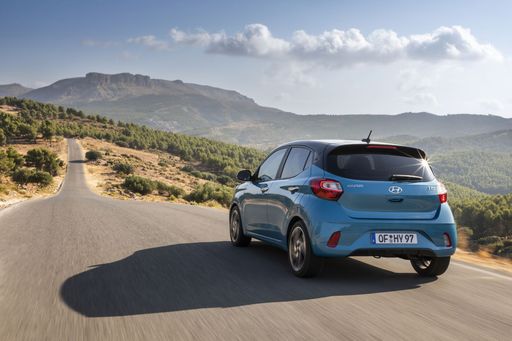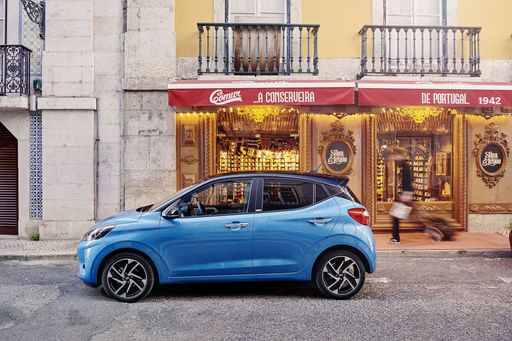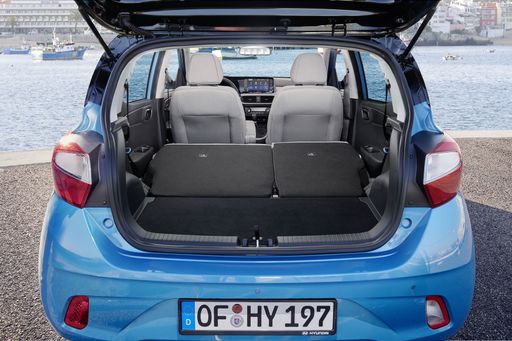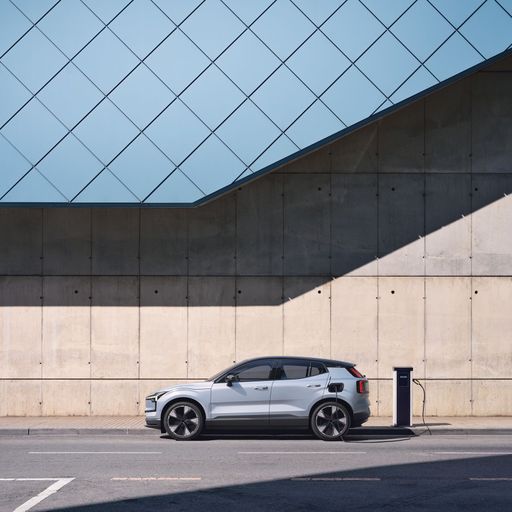Hyundai i10 vs Volvo EX30 – Which model is better for everyday use?
Compare performance, boot capacity, efficiency and price at a glance.
Find out which car is the better choice for you – Hyundai i10 or Volvo EX30?
Costs and Efficiency:
Price and efficiency are often the first things buyers look at. Here it becomes clear which model has the long-term edge – whether at the pump, the plug, or in purchase price.
Hyundai i10 has a clearly advantage in terms of price – it starts at 14600 £, while the Volvo EX30 costs 33000 £. That’s a price difference of around 18429 £.
Engine and Performance:
Under the bonnet, it becomes clear which model is tuned for sportiness and which one takes the lead when you hit the accelerator.
When it comes to engine power, the Volvo EX30 has a convincingly edge – offering 428 HP compared to 90 HP. That’s roughly 338 HP more horsepower.
In acceleration from 0 to 100 km/h, the Volvo EX30 is convincingly quicker – completing the sprint in 3.60 s, while the Hyundai i10 takes 11.40 s. That’s about 7.80 s faster.
In terms of top speed, the Volvo EX30 performs hardly perceptible better – reaching 180 km/h, while the Hyundai i10 tops out at 175 km/h. The difference is around 5 km/h.
There’s also a difference in torque: Volvo EX30 pulls decisively stronger with 543 Nm compared to 172 Nm. That’s about 371 Nm difference.
Space and Everyday Use:
Beyond pure performance, interior space and usability matter most in daily life. This is where you see which car is more practical and versatile.
Both vehicles offer seating for 5 people.
In curb weight, Hyundai i10 is convincingly lighter – 996 kg compared to 1840 kg. The difference is around 844 kg.
In terms of boot space, the Volvo EX30 offers distinct more room – 318 L compared to 252 L. That’s a difference of about 66 L.
In maximum load capacity, the Hyundai i10 performs minimal better – up to 1050 L, which is about 50 L more than the Volvo EX30.
When it comes to payload, Hyundai i10 minimal takes the win – 423 kg compared to 390 kg. That’s a difference of about 33 kg.
Who wins the race?
The Volvo EX30 proves to be outperforms in nearly all aspects and therefore becomes our DriveDuel Champion!
Volvo EX30 is the better all-rounder in this comparison.

Volvo EX30
Hyundai i10
The Hyundai i10 impresses with its compact design, making it an ideal choice for navigating through busy urban environments. Its interior is surprisingly spacious, offering drivers and passengers comfort beyond what one might expect from a city car. The model combines efficiency and practicality, making it an attractive option for those seeking both economy and functionality in their daily commute.
details @ hyundai.news
@ hyundai.news
 @ hyundai.news
@ hyundai.news
 @ hyundai.news
@ hyundai.news
 @ hyundai.news
@ hyundai.news
 @ hyundai.news
@ hyundai.news
Volvo EX30
The Volvo EX30 represents a bold step forward for the brand, combining advanced technology with sustainable design principles. Its sleek and compact exterior belies a spacious interior that offers a premium driving experience. With a focus on safety and innovation, this model reflects Volvo's commitment to shaping the future of urban mobility.
details @ Volvo
@ Volvo
 @ Volvo
@ Volvo
 @ Volvo
@ Volvo
 @ Volvo
@ Volvo
 @ Volvo
@ Volvo

|

|
|
|
|
Costs and Consumption |
|
|---|---|
|
Price
14600 - 19000 £
|
Price
33000 - 49100 £
|
|
Consumption L/100km
4.9 - 5.5 L
|
Consumption L/100km
-
|
|
Consumption kWh/100km
-
|
Consumption kWh/100km
17 - 18.7 kWh
|
|
Electric Range
-
|
Electric Range
339 - 476 km
|
|
Battery Capacity
-
|
Battery Capacity
49 - 65 kWh
|
|
co2
110 - 124 g/km
|
co2
0 g/km
|
|
Fuel tank capacity
36 L
|
Fuel tank capacity
-
|
Dimensions and Body |
|
|---|---|
|
Body Type
Hatchback
|
Body Type
SUV
|
|
Seats
4 - 5
|
Seats
5
|
|
Doors
5
|
Doors
5
|
|
Curb weight
996 - 1099 kg
|
Curb weight
1840 - 1960 kg
|
|
Trunk capacity
252 L
|
Trunk capacity
318 L
|
|
Length
3670 - 3675 mm
|
Length
4233 mm
|
|
Width
1680 mm
|
Width
1838 mm
|
|
Height
1480 - 1483 mm
|
Height
1550 - 1567 mm
|
|
Max trunk capacity
1050 L
|
Max trunk capacity
1000 L
|
|
Payload
344 - 423 kg
|
Payload
370 - 390 kg
|
Engine and Performance |
|
|---|---|
|
Engine Type
Petrol
|
Engine Type
Electric
|
|
Transmission
Manuel, Automatic
|
Transmission
Automatic
|
|
Transmission Detail
Manual Gearbox, Automated Manual
|
Transmission Detail
Reduction Gearbox
|
|
Drive Type
Front-Wheel Drive
|
Drive Type
Rear-Wheel Drive, All-Wheel Drive
|
|
Power HP
63 - 90 HP
|
Power HP
272 - 428 HP
|
|
Acceleration 0-100km/h
11.4 - 18.4 s
|
Acceleration 0-100km/h
3.6 - 5.7 s
|
|
Max Speed
143 - 175 km/h
|
Max Speed
180 km/h
|
|
Torque
93 - 172 Nm
|
Torque
343 - 543 Nm
|
|
Number of Cylinders
3 - 4
|
Number of Cylinders
-
|
|
Power kW
46 - 66 kW
|
Power kW
200 - 315 kW
|
|
Engine capacity
998 - 1197 cm3
|
Engine capacity
-
|
General |
|
|---|---|
|
Model Year
2024
|
Model Year
2024 - 2025
|
|
CO2 Efficiency Class
C, D
|
CO2 Efficiency Class
A
|
|
Brand
Hyundai
|
Brand
Volvo
|
Is the Hyundai i10 offered with different drivetrains?
The Hyundai i10 is offered with Front-Wheel Drive.
The prices and data displayed are estimates based on German list prices and may vary by country. This information is not legally binding.
